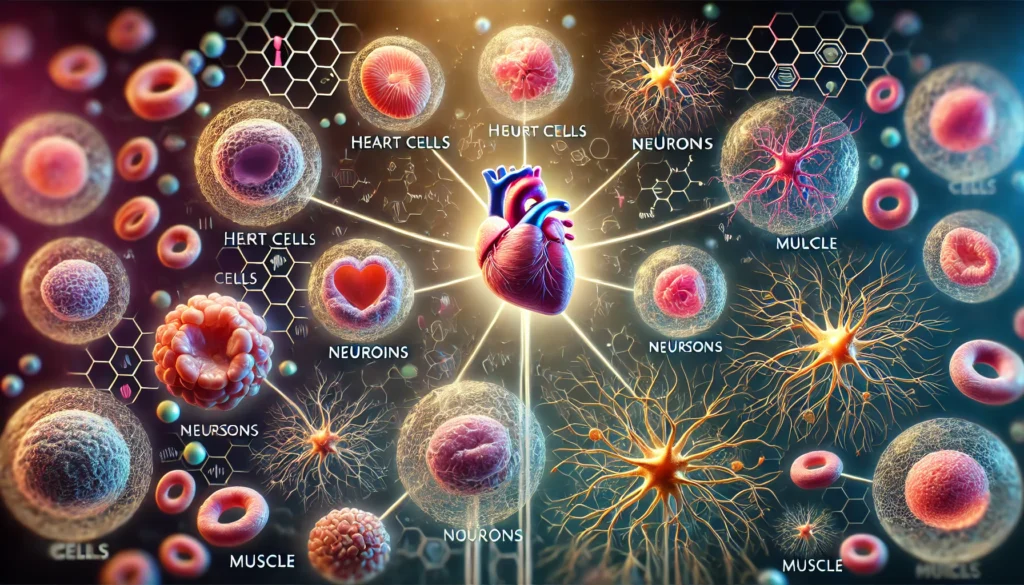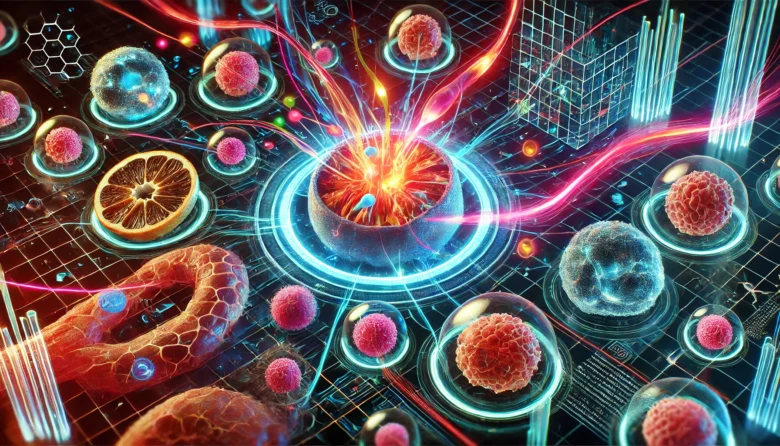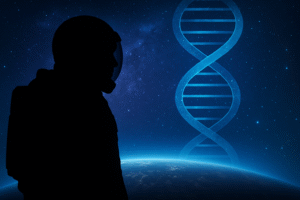Imagine a world where damaged tissues and organs can heal themselves, restoring function and improving quality of life. This concept isn’t just a distant dream—it’s happening now, thanks to the incredible science of stem cells in regenerative medicine. Stem cells function as the body’s foundational elements, offering the ability to repair or replace damaged tissues in ways previously unimaginable. In this blog, we’ll explore the role of stem cells in regenerative medicine, how they work, and their transformative impact on healthcare.
What Are Stem Cells?
Stem cells are unique cells in the body with the ability to divide and develop into different types of cells. Unlike specialized cells (like skin or muscle cells), stem cells can multiply and produce more stem cells, or they can differentiate into specific cell types, like neurons or blood cells. This dual ability makes them incredibly valuable in medicine, especially when it comes to tissue repair and regeneration.
There are two main types of stem cells:
Embryonic stem cells (ESCs): Found in early-stage embryos, these stem cells have the potential to become any type of cell in the body. This characteristic, called pluripotency, makes them highly versatile.
Adult stem cells: Found in specific tissues like the bone marrow or brain, these stem cells have a more limited ability to become different cell types, but they are still essential for maintaining and repairing tissues.
Scientists have also developed induced pluripotent stem cells (iPSCs) by reprogramming adult cells to behave like embryonic stem cells. This innovation avoids the ethical concerns surrounding the use of ESCs and offers exciting possibilities for regenerative therapies.

Stem Cells in Regenerative Medicine: How Do They Work?
Regenerative medicine focuses on repairing, replacing, or regenerating damaged tissues and organs. Stem cells are the backbone of many regenerative therapies because of their unique ability to differentiate into various cell types and support the body’s natural healing processes.
Tissue Repair and Regeneration
One of the most well-known applications of stem cells is in tissue repair. For instance, in conditions like heart disease, damaged heart muscle cells can lead to irreversible heart failure. Stem cell therapies aim to replace those damaged cells with healthy ones. Researchers have used stem cells to regenerate heart tissue, giving hope to millions of people living with cardiovascular diseases.
A breakthrough case involved a heart patient in the United Kingdom who received a pioneering stem cell treatment to regenerate his heart tissue after a heart attack. While this treatment is still in the experimental stages, the results are promising, with improved heart function and reduced scarring.
Bone and Cartilage Repair
Stem cells also play a significant role in orthopaedic treatments. For example, osteoarthritis, a condition where joint cartilage wears down, causing pain and immobility, is a prime candidate for stem cell therapies. By injecting stem cells into the affected joint, doctors aim to stimulate cartilage repair, potentially avoiding the need for joint replacement surgery.
In a fascinating case, a young athlete with severe knee damage avoided surgery by opting for a stem cell procedure. Doctors harvested her own bone marrow stem cells and injected them into her knee, and within months, the cartilage began regenerating. She returned to her sport without the need for invasive surgery.
Neurodegenerative Diseases
Conditions like Parkinson’s disease, Alzheimer’s disease, and spinal cord injuries are devastating because they involve the loss of neurons, which do not naturally regenerate. Researchers are exploring stem cells as a possible solution to replace damaged neurons and help restore lost functions. Early-stage trials have shown promising results in improving symptoms for patients with Parkinson’s disease, where stem cells were used to create new dopamine-producing neurons, which are typically lost in the disease.
In a remarkable clinical study, researchers used stem cells to treat patients with spinal cord injuries. These stem cells helped repair damaged spinal tissue, and some patients regained partial movement and sensation. While much work remains, these results are a huge step forward.
Diabetes Treatment
Type 1 diabetes arises when insulin-producing beta cells in the pancreas are destroyed. Stem cell research has made progress toward regenerating these beta cells. The goal is to create a therapy that can restore the body’s ability to produce insulin naturally.
In a recent study, scientists successfully used stem cells to generate insulin-producing cells in the lab. When implanted into diabetic mice, these cells helped control blood sugar levels. While this treatment is not yet available for humans, the research is a hopeful sign for millions of people with diabetes worldwide.
Wound Healing and Skin Regeneration
Burn victims and individuals with severe wounds can benefit from stem cell therapy, which helps regenerate skin tissue. Stem cells can be used to grow new skin layers, and in some cases, they’ve been used to treat chronic wounds that wouldn’t heal with traditional methods. This approach offers a less invasive and potentially more effective alternative to skin grafting.
In a pioneering case in Italy, a young boy with a life-threatening genetic skin condition received stem cell therapy to regenerate large portions of his skin. His treatment was considered a significant success, and the patient now leads a normal life following the procedure.
Ethical Considerations and Challenges
While stem cells hold great promise, there are important ethical and practical issues that must be addressed. The use of embryonic stem cells, for instance, raises concerns because it involves the destruction of embryos. This has led to strict regulations in many countries. The creation of induced pluripotent stem cells (iPSCs), which do not require embryos, presents a more ethically acceptable option.
Another challenge is ensuring that stem cell therapies are safe and effective. While there are many success stories, some treatments remain experimental and need more research before becoming mainstream medical options. There’s also the potential risk of the body rejecting the transplanted stem cells or the development of unwanted side effects, such as tumour growth.
Conclusion: The Future of Stem Cells in Medicine
Stem cells are undeniably one of the most exciting frontiers in modern medicine. Their ability to repair, regenerate, and replace damaged tissues opens up a world of possibilities for treating conditions that were once considered untreatable. From heart disease and diabetes to neurodegenerative disorders and severe injuries, stem cells hold the key to transforming lives and advancing healthcare.
As the science behind stem cells continues to evolve, it’s important to balance innovation with careful ethical consideration. The potential is vast, but so are the responsibilities. Whether we’re looking at growing new tissues or healing damaged organs, stem cells are at the forefront of a medical revolution that will shape the future of healthcare.
Author’s Note:
Stem cell research is advancing quickly with vast potential, but it’s crucial to remember that many treatments are still in the experimental phase. If you’re considering stem cell therapy for any condition, make sure to consult with medical professionals and ensure that treatments are FDA-approved or legally authorized in your country.
G.C., Ecosociosphere contributor.
References and Further Reading:
- Mayo Clinic: Stem Cells: What They Are and What They Do
- National Institutes of Health: Stem Cell Basics
- (2018). Upregulation of miR-210 promotes differentiation of mesenchymal stem cells (MSCs) into osteoblasts. Bosnian Journal of Basic Medical Sciences. https://doi.org/10.17305/bjbms.2018.2633
- Stem Cell Treatment for Czech Republic in India – Stem Cell Care India. https://www.stemcellcareindia.com/stem-cell-treatment-for-czech-republic/
- Exploring the Different Types of Stem Cells Found in Bone Marrow. https://nationalstemcelltherapy.com/exploring-the-different-types-of-stem-cells-found-in-bone-marrow/
- The Role of Stem Cells in Drug Discovery | Drug Discovery And Development. https://www.labroots.com/trending/drug-discovery-and-development/25326/role-stem-cells-drug-discovery
- The Revolutionary Power of Stem Cells: Unlocking Pain Relief ⋆ drten20. https://drten20.com/the-revolutionary-power-of-stem-cells-unlocking-pain-relief/
- University of Minnesota researchers developed 3D printed device containing stem cells to treat patients with spinal cord injuries | AcceleratingBiz. https://acceleratingbiz.com/briefing/university-of-minnesota-researchers-developed-3d-printed-device-containing-stem-cells-to-treat-patients-with-spinal-cord-injuries/
- Your own stem cells can be used to grow new bone – International Hospital. https://interhospi.com/your-own-stem-cells-can-be-used-to-grow-new-bone/
- How Our Bodies Renew and Repair Themselves. https://gladiatortherapeutics.com/the-science-of-cellular-regeneration/
- Stem Cell Banking for Future Eye Disease Treatments. https://nationalstemcelltherapy.com/stem-cell-banking-for-future-eye-disease-treatments/




